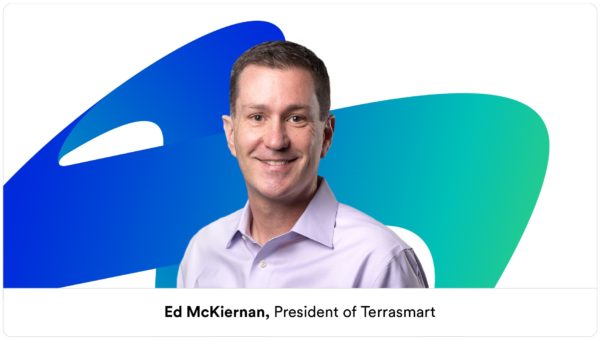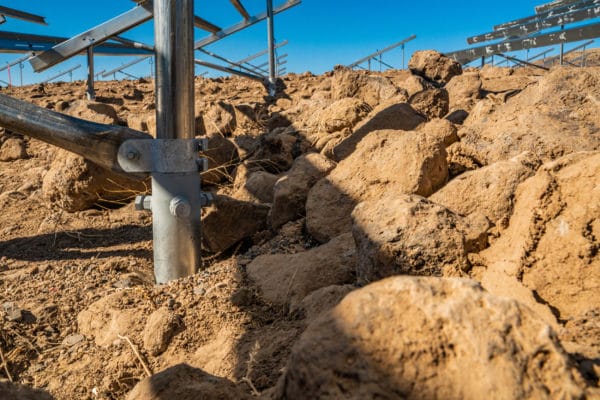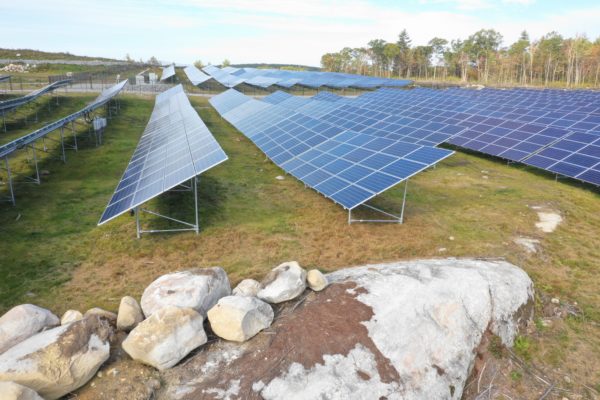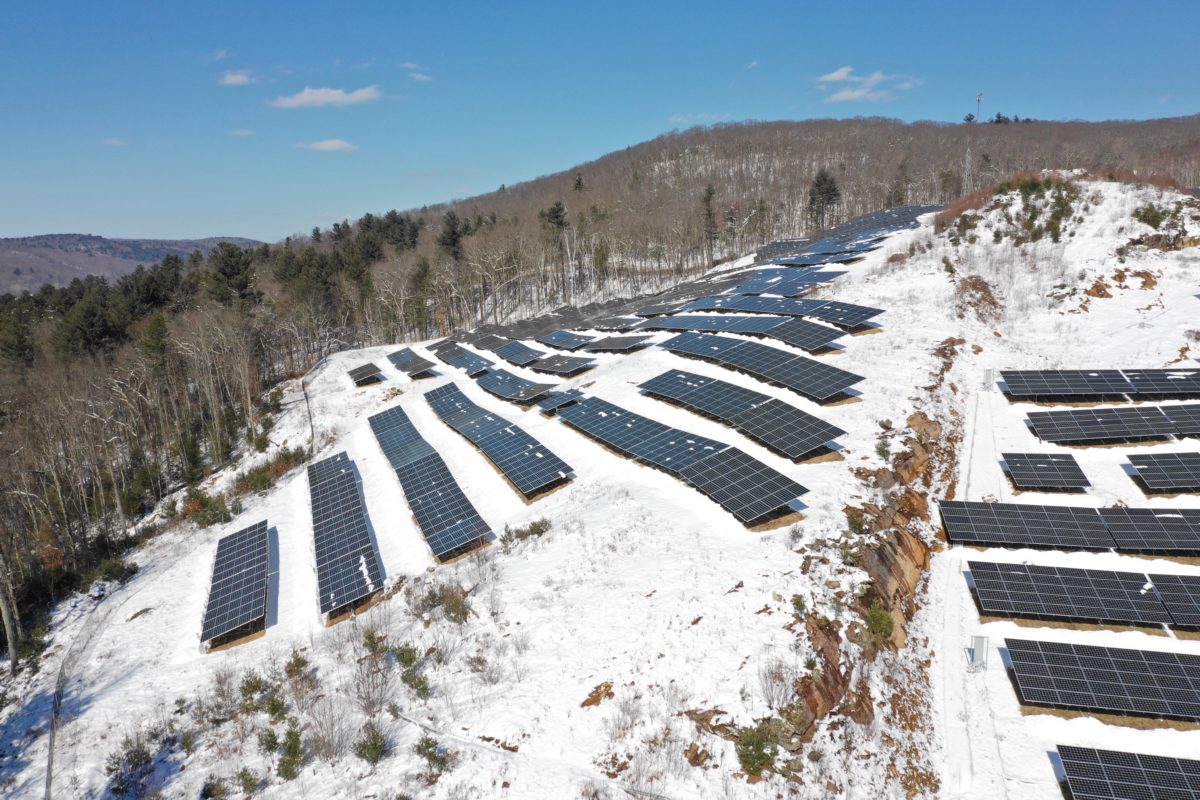In November 2021, Gibraltar’s RBI Solar, SolarBOS, Sunfig and TerraSmart legacy brands announced that they would be unifying under a single brand and identity, Terrasmart, to deliver seamless solutions across the solar project lifecycle, in order to mitigate risks, streamline development, and create unified solutions for customers, according to the company.
However, laying out goals and actively working and making progress on achieving them are two different things all together, so pv magazine sat down with Terrasmart President, Ed McKiernan to discuss the implications of the integration, ideas behind the new identity, and his company’s vision of their role in the US’ transition to renewable energy.

“Customers need options,” said McKiernan. “They need options to figure out what the right solution set is. And then once they figure that out, they need sort of a box of Lego bricks that’s flexible enough that they can fit it one way or another, because they’re not going to do the same cookie-cutter project every single time. That’s what led us to even start thinking about acquiring other companies to add together.”
This idea of options, and more so one centralized offering that can bring all of the different services that the Terrasmart brand now offers into one experience, has been part of Gibraltar’s long-term vision of their place in the US energy landscape since long before the idea of consolidating and unifying their brands was proposed.

Image: Terrasmart
Gibraltar first entered the solar space in 2015 when it acquired RBI Solar, a mounting solutions provider for commercial, utility-scale, and carport solar projects. That acquisition was followed by the 2018 purchase of SolarBOS, an electrical balance-of-systems company. The company kicked off 2021 by acquiring Sunfig, a project software services company, for $3.75 million. A short time later, Gibraltar paid $220 million for TerraSmart, which provides screw-based, ground-mount solar racking technology, and the pieces for what would soon become the new Terrasmart were all put into place.
These acquisitions all provided an opportunity for Gibraltar to expand its footprint in the U.S. market by becoming an end-to-end, turnkey provider of ground-mount infrastructure, tracker tech, and design software, but the solution still needed identity.
Why Terrasmart?
If you’re four brands, then the first message you’ve given your own employees is hold on to that legacy identity,” said McKiernan. “Just changing the logo, just changing the name, that is not sufficient, the rest of it goes to aligning your employees around the strategy, helping them to understand why we’re making that change, and then looking at our daily operating behaviors, and changing so that when customers look for that experience, we can support it.”
Part of the decision came down to the idea that, even if these legacy brands were all inter-operating and working with the same customers, the landscape of different teams and identities, to customers, would feel the same as working with four entirely unrelated companies.
“If we had stayed as we were before, we would just be misaligned with our strategy and not giving our customers what they wanted,” asserted McKiernan. “It’s the power of changing the brand that’s on your email, the halls of the building you walk through, the clothing you wear, the products you sell, changing everything. What we do individually doesn’t matter as much as what we do collectively.”
Terrasmart, the brand’s chosen identity, comes with a dual meaning. The first is a literal translation of the name Terrasmart — earth smart — which is how the company sees solar: a smart solution, not just for customers and energy buyers, but for the planet. A smarter choice in energy for the earth.
The way the company looks to present this value outwardly is through its broad, technology-agnostic portfolio of hardware and services. The company’s paramount goal is to be able to plug and play whatever solution is required for the best solution on every site – no matter the condition.
Since the initial rebranding, McKiernan has identified another meaning behind the name, a natural extension of the first’s philosophy: not just doing smart things for the earth, but with the earth. According to McKiernan, this comes down to getting the most out of every project site and variable condition that they can, in order to deliver an optimized project to the customer.
Their products interact and have a relationship with the earth, and the vision is to utilize the land they have to the fullest, in order to deliver the cleanest solution possible.
Areas of innovation
For Terrasmart to achieve its goal of being a one-stop solution provider of solar projects for its customers, McKiernan shares that Terrasmart has targeted four areas of development and focus: developing and innovating its tracker platform, advancing its balance of systems wiring solutions, developing additional intelligent operation options for trackers, and starting work on some of the company’s futuristic ideas, which include hybrid approaches combining elements of trackers and fixed-tilt racking, as well as reducing the amount of steel the company uses in its solutions.

The aspect of steel usage is an interesting one for Terrasmart, as the company fabricates its own steel structures in house. The reason is that this allows Terrasmart to switch up their operations “on a dime,” as McKiernan puts it, in order to accomodate design and timeline changes for customers.
Sourcing the steel to enable this process, however, has become more challenging.
“In today’s environment, being able to buy steel from the right people is very hard to do,” said McKiernan. “There’s not any excess capacity in the steel industry. If you’re on the outside looking in, you might have to go halfway around the world to get your steel. That would be a big problem between duties and freight to get it. And then of course, your ability to react to changing project schedules, if that’s where you’re pulling your steel from, is very challenged.”
Operating in the US
Despite the size of the company and scope of operations, Terrasmart has and will continue to dedicate its efforts in the US renewable energy space, driven by the company’s “Power of Focus” philosophy and the idea that less is more.
“If you look at RBI Solar, and the legacy TerraSmart businesses that were started in the late 2000s, they are massive in the racking space,” explained McKiernan. “They are truly founders in the space and feel a lot of responsibility that we can’t take our eye off the ball in the US to go figure out how to execute internationally.”
Could the company expand to offer its services across the Atlantic or Pacific, sure, but what’s harder to establish overseas is the start-to-finish solar system experience that the company is developing. Moving internationally, the company would become a step in the development process. When the vision is to become the process, stepping out of that framework because singular opportunities arrive here or there weakens the overall mission.
“The customers that have brought us to this point are here in the US,” said McKiernan. “They demand a lot from us and we take those obligations very seriously. Our strategy is to grow with them, and we think that, you know, we would be penny wise and pound foolish by chasing opportunities on foreign soil.”
This content is protected by copyright and may not be reused. If you want to cooperate with us and would like to reuse some of our content, please contact: editors@pv-magazine.com.









By submitting this form you agree to pv magazine using your data for the purposes of publishing your comment.
Your personal data will only be disclosed or otherwise transmitted to third parties for the purposes of spam filtering or if this is necessary for technical maintenance of the website. Any other transfer to third parties will not take place unless this is justified on the basis of applicable data protection regulations or if pv magazine is legally obliged to do so.
You may revoke this consent at any time with effect for the future, in which case your personal data will be deleted immediately. Otherwise, your data will be deleted if pv magazine has processed your request or the purpose of data storage is fulfilled.
Further information on data privacy can be found in our Data Protection Policy.